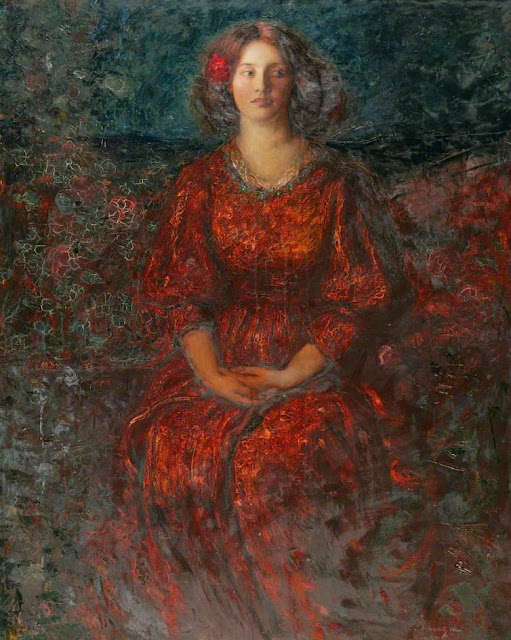Thomes Edwin Mostyn
Thomes Mostyn was a landscape and figurative artist born in Liverpool in 1864, the son of artist Edwin Mostyn, and who is best known for his romantic garden scenes. He spent most of his upbringing in Manchester, later becoming an apprentice Lithographer and attending the Manchester Art School and the Manchester Academy of Fine Arts, where he won first prize for life drawing. His held his first exhibition in Manchester in 1880, and in 1891 exhibited at the Royal Academy. During the early part of his career, he painted colourful and lavish garden scenes often with the inclusion of houses, with his subjects ranging from the formal to the cottage garden. In 1891, he was made an associate member of the Manchester Academy of Fine Art, the first of many accolades, and founded the New Art School, also known as The Studio, at 76 High Lane, Chorlton-Cum-Hardy. Despite his commitments, Mostyn was still pro-active in his own development and in 1893, he studied under Sir Hubert Von Herkomer who was to have a strong influence on his works with his anti- "Victorian Materialist" thinking. During this period, Mostyn painted mainly working class figures, portraying the poverty and hardship they endured. In 1895, he gained further recognition by the art world by becoming a member of the Royal Institute of Oil Painters. The following year he was elected a full member of Manchester Academy of Art and became the President of the Graphic Club at the Manchester Athenaeum. He also experimented with
religious subjects, and in 1897 his painting "Christ in the Garden of Gethsemane" was exhibited by Agnews at Manchester City Art Gallery to an audience of over 40,000. By 1904, he had moved to London and became known as "the Manchester painter" and between 1910 and 1911, Mostyn's artistic development went through one of the most important transitions in his career and he began to combine his interest in figures with his earlier, lighter paintings of garden landscapes. His 1914 "Garden of Enchantment" was used as a stage set for a production of Parsifal and in 1917 became President of Manchester Academy of Fine Art until 1920. After World War I he moved to Devon and became associated with the Newlyn School. He started to produce a series of enchanted garden scenes with figures in an impressionistic style for which he is now best known, as in this wonderful example. He used a palette knife to layer colour on colour to construct an atmospheric and dreamlike quality to his paintings. Mostyn continued to exhibit and in the 1920's held a number of one-man exhibitions at the Fine Art Society, London. During his lifetime, he exhibited a total of 14 works at the RA and also exhibited at the Paris Salon, the Carnegie Institute Pittsburgh and other galleries in Germany and Rome. Examples of his works can be found in public art galleries including Manchester, Oldham, Newcastle, Cardiff and Liverpool as well as in private collections around the world






















































































ليست هناك تعليقات:
إرسال تعليق